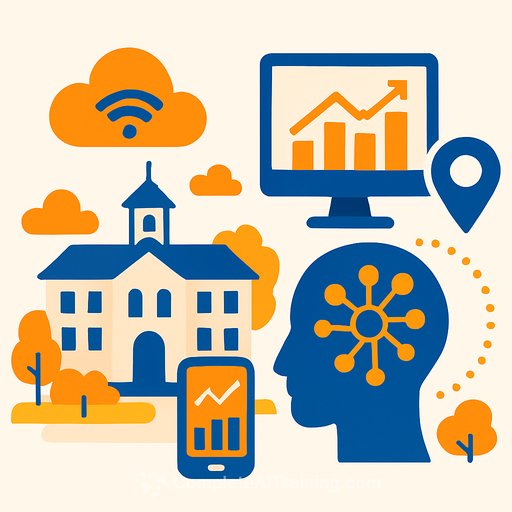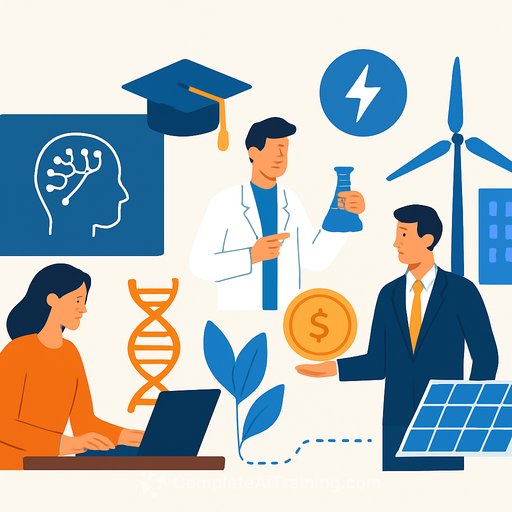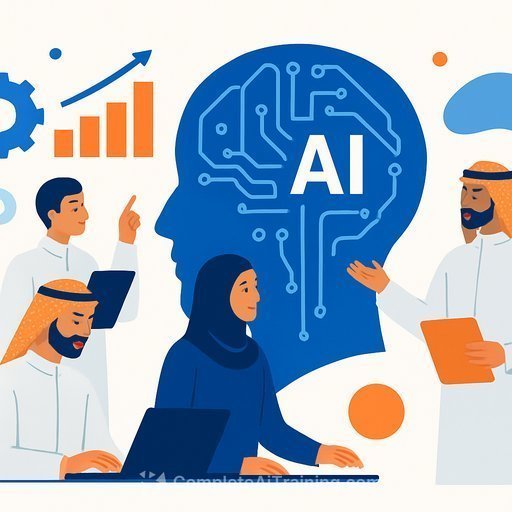How AI can enable a culture of continuous campus planning
Ten-year master plans once made sense. Today, shifting enrollment, new pedagogies, aging buildings and rising expectations demand a planning model that updates as fast as campus needs change.
AI-driven tools and real-time data make continuous planning practical. The payoff: campuses that stay nimble, resilient and responsive without rebooting the process every decade.
What slows master planning
- Engagement takes time: Leaders, faculty, students, alumni, community partners-gathering their input is essential for consensus. But manual workshops, interviews and notes stretch timelines.
- Data readiness lags: Space inventory, utilization and deferred maintenance data often sit in silos, are inconsistently updated and lack clear ownership. Teams spend months "catching up" before real planning starts.
Move from episodic plans to continuous planning
Continuous planning keeps systems current and creates regular feedback loops with the people who use campus spaces. AI doesn't replace engagement-it makes it easier to collect, clean and act on what you learn.
The result: faster updates, better decisions and fewer surprises.
AI automation for real-time campus data
Manual walk-throughs and anecdotal reporting can't keep pace. A digital twin-a living model of your campus-can sync data on space use, energy, scheduling and maintenance in near real time.
With this foundation, planners and facilities teams get immediate, trustworthy inputs for decisions rather than starting from scratch each cycle.
- Integrate data from room scheduling, access control, sensors and work orders
- Standardize definitions for "utilization," "capacity," and "condition"
- Automate data refreshes and alerts when data drifts or gaps appear
AI as a planning orchestrator
In a continuous model, coordination is constant. AI can act as an assistant that keeps rhythm and alignment without adding headcount.
- Send reminders for data updates and stakeholder check-ins
- Flag misalignments between goals, budgets and space availability
- Track feedback over time and surface unresolved issues
- Generate clear action lists for quarterly or annual mini-planning cycles
AI facility planning dashboard
Facilities leaders juggle aging assets, tight budgets and a flood of requests with lean teams. An AI-enabled dashboard can receive, sort and analyze requests, then recommend next steps based on agreed criteria.
- Route and prioritize tickets using condition, risk, impact and cost
- Consolidate data from multiple sources to reduce swivel-chair work
- Maintain clean records to support capital planning and funding cases
- Give leaders a current view of backlog, spend and key risks at any time
Start fast: a 90-day playbook
- Weeks 1-2: Define 5-7 campus planning KPIs (utilization, classroom fit, deferred maintenance liability, energy intensity, response time, student experience signals)
- Weeks 3-6: Inventory data sources, set common definitions and connect 2-3 high-value feeds (scheduling, work orders, space inventory)
- Weeks 7-10: Stand up a basic dashboard with weekly auto-refresh and alerts for missing data
- Weeks 11-13: Run a pilot "mini-planning" cycle with a focused stakeholder group; document wins and gaps
Keep people at the center
AI supports decisions, it doesn't make them. Protect the human side of planning by building feedback loops with faculty, students and staff and making trade-offs visible.
- Publish assumptions behind recommendations
- Offer clear opt-in surveys and workshop summaries
- Retain human approvals for budget and mission-critical choices
Governance that sustains progress
- Assign data stewardship for each source and set update cadences
- Document data definitions and change history
- Audit the dashboard quarterly for bias and accuracy
EDUCAUSE guidance on data governance
What success looks like
- Shorter planning cycles: annual or semiannual updates instead of decade-long resets
- Higher classroom and lab utilization without eroding experience
- Reduced deferred maintenance growth and clearer capital priorities
- Faster response to enrollment shifts and program changes
- Greater transparency and trust across stakeholders
Take the next step
Treat planning as an ongoing practice. Stand up a minimal data backbone, automate refreshes and build a cadence of small, frequent decisions.
If your planning, facilities or IT teams need practical upskilling on AI workflows, explore role-based options at Complete AI Training.
From big plans to continuous improvement
Campuses that update decisions with current data and ongoing input will waste less time, spend more wisely and serve students better. With AI as a steady planning partner, higher education can stop resetting and start improving-week by week, cycle by cycle.
Your membership also unlocks:






